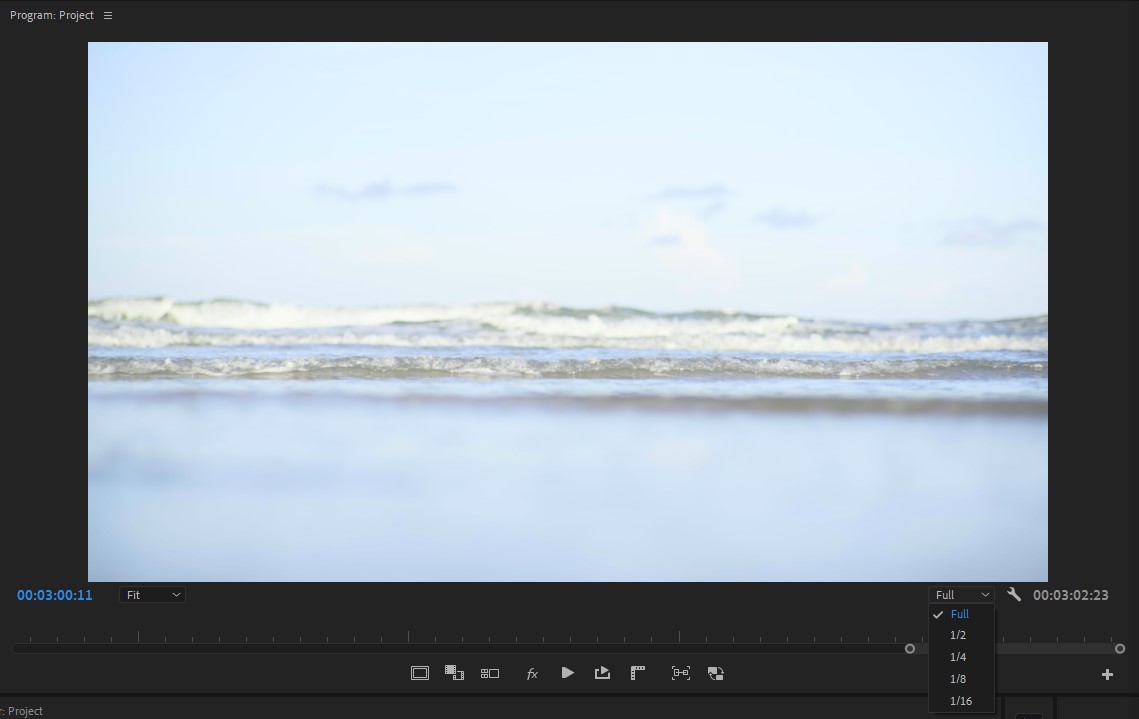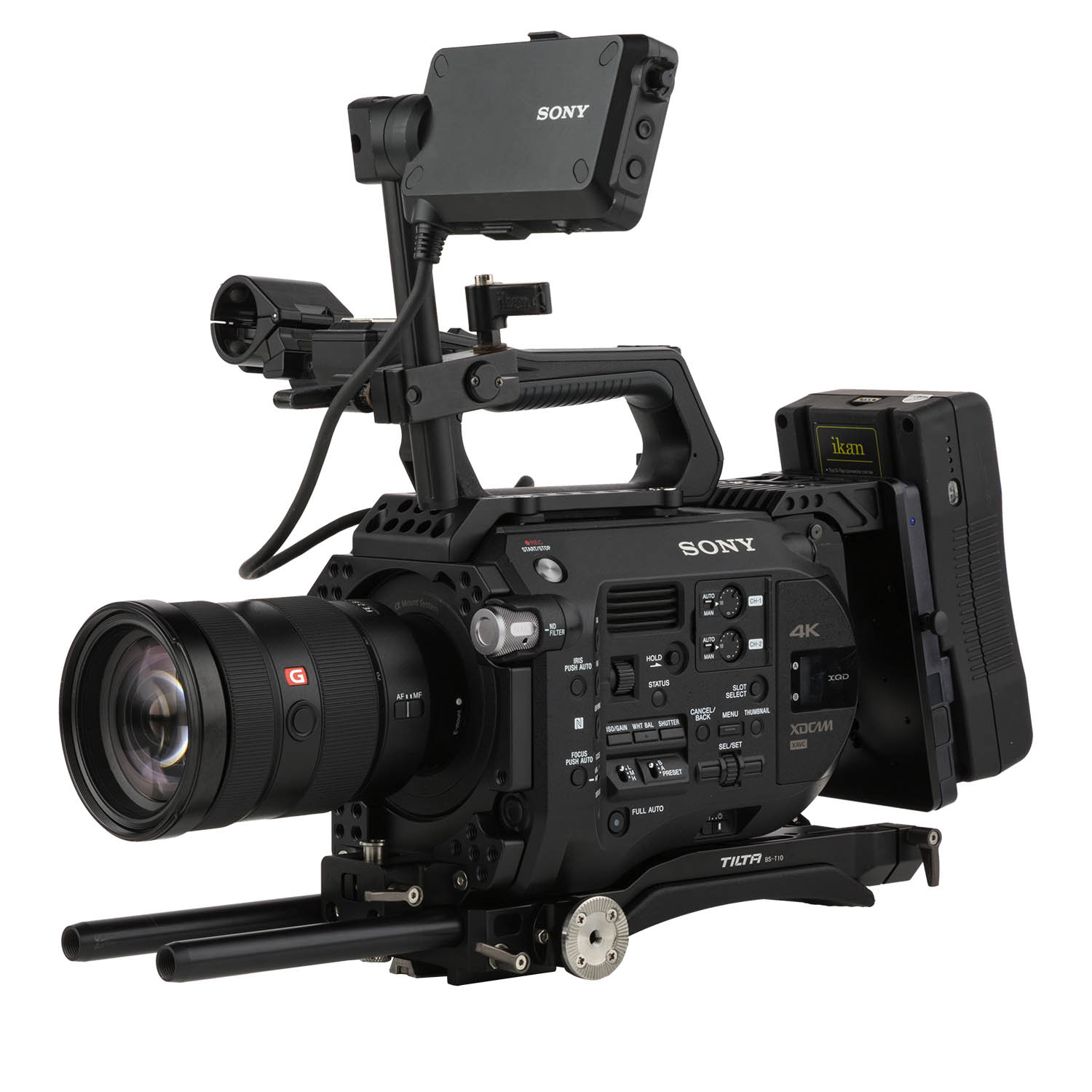- Premiere Pro Two Monitors
- Premiere Pro Two Program Monitors Best Buy
- Premiere Pro Multiple Program Monitors
Premiere Pro is the industry-leading video editing software for film, TV, and the web. Creative tools, integration with other apps and services, and the power of Adobe Sensei help you craft footage into polished films and videos. And with the Premiere Rush app, you can create and edit new projects from any device. See Dual Monitors. See Dual Monitors. Games Movies TV Video. Explore Wikis; Community Central. Adobe Premiere Pro is a FANDOM Lifestyle Community. The 'main' window for Premiere should typically be on the monitor that is your main OS monitor, or it can get cranky. But past that, grab the panels you want on the other monitor and drag them over there, sizing and grouping to your heart's content. Program Monitor and Other Features in Adobe Premiere Pro. Here is the Post on Program Monitor, Use of Markers, Sync Locks and Track Locks in Adobe Premiere Pro. Please Check Our Previous Posts before reading this post. Program Monitor: Program monitor displays your sequence in the timeline. You can also do some editing tasks with program monitor.
Cover image via
Having trouble configuring Premiere Pro CC for best performance? Here are a few quick tips that’ll speed up your Premiere Pro video editing.
Finding the right settings to make sure you’re getting the best out of Premiere Pro CC can sometimes be a bit tricky. Check out these quick tips to find out how to configure your RAM usage, change your label colors into sensible descriptions, use two monitors for playback, use a hidden hot key and more.
What’s the video at the top of this post got to do with configuring Premiere Pro CC? Not much! But it’s a pretty fun intro to Premiere Pro from the Conan editors.
Understanding Premiere Pro CC Memory Settings
Premiere Pro Two Monitors
Digital Rebellion has a very clear breakdown of how Premiere Pro CC makes use of the available system RAM and how to get the best performance from your machine.
Premiere, After Effects, Encore, Prelude, Media Encoder and Photoshop all use the same memory pool so the RAM is assigned between them. Premiere and After Effects are assigned the highest priority within the pool so closing these applications can improve performance in the other apps.
As a quick aside if you get ‘low memory warnings’ while rendering you can get around it by doing the following:
By default, Premiere Pro renders video using the maximum number of available processors, up to 16. However, some sequences, such as those containing high-resolution source video or still images, require large amounts of memory for the simultaneous rendering of multiple frames. These sequences can force Premiere Pro to cancel rendering and to give a Low Memory Warning alert. In these cases, you can maximize the available memory by changing the rendering optimization preference from Performance to Memory. Change this preference back to Performance when rendering no longer requires memory optimization.
Select Edit > Preferences, and select Memory in the Preferences dialog box.
In the drop-down list next to Optimize Rendering For, select Memory.
Click OK, close Premiere Pro, and reopen the project for the new preference to take effect.
Showing CUDA Render System Display
In this short video tutorial, SpliceNPost shares a great quick tip to toggle on a hidden feature that reveals a whole load of information on your playback quality. Even though the tutorial is using CS6, the same applies in CC.
To toggle on the CUDA Render System information display (on a Mac) hit CMD+SHIFT+F11. It will then appear the next time you press play. Use the same key command to turn it off again.
For a simple display of whether you are dropping frames while playing back your footage click on the spanner icon on in the bottom right of the program monitor and select ‘show dropped frame indicator’.
A little dot will appear on the left hand-side of the program monitor. Green is good, yellow indicates dropped frames.
Using Two Monitors with Premiere Pro CC
Larry Jordan has a great explanation of how to set up Premiere Pro CC to make use of two monitors and how to configure your user interface to make the most of all that new space. Larry also demonstrates how to fix any audio sync issues and save your newly created two-monitor workspaces. A great read, check it out here!
Enabling Mercury GPU Acceleration
This short tutorial from Video2Brain, again for CS6 but the same applies in CC, walks you through how to make the most of Mercury Engine GPU hardware acceleration within Premiere. For a full list of supported GPU’s check out this recent blog post from Adobe.
Changing Premiere Pro CC Color Labels
One of the most confusing things in Premiere Pro is the color label settings. What color is Caribbean or Cerulean anyway? It is in fact very easy to change the names and colors of these labels in a couple of clicks.
Just head to Preferences > Label Colors to type in new names for the colors and, by clicking on the colored boxes, to change the colors themselves.
What you might want to do is to change the names of the colors to the type of assets they will be color coding. For example the default color for a bin is ‘Mango’. If you re-label the mango color to Bin, then when you come to select a color label for a new bin, you will know that all bins should be mango.
This becomes more useful in shared edit systems where say all final masters should be red, or all temp graphics green. When any editor clicks on the label colors to change something, they will get a reminder of what color everything should be. This helps everyone to work consistently and collaboratively.
To find out the default color of assets click on Preferences > Label Defaults.

[ Updated Feb. 23, 2019, to reflect new interface behaviors.]
Reader Eric Merklein wrote asking whether it is possible to use two monitors with Adobe Premiere Pro CC. And the answer is “Yes,” but… it depends upon what you mean by the question.
Let me explain. There are two ways we could use a second computer monitor: to display program video or display more of the interface.
NOTE: Here’s an article to using two monitors in Final Cut Pro X.
DISPLAY VIDEO TO SECOND MONITOR
In the CC release, Adobe changed how we view the output of the Program Monitor. If you want to display program monitor output to a second computer monitor, all you need to do is change one preference setting.
(Note: This screen is from Premiere Pro CC 2014.)
(This screen is from Premiere Pro CC 2019.)
Go to Premiere Pro > Preferences > Playback. In later versions, first click Enable Mercury Transmit. This enables sending video to a second monitor. Then, check the monitor on which you want program video to appear. And that’s it.
(In the earlier interface, the option to enable Mercury Transmit did not appear.)
BIG NOTE: Most computer monitors are not calibrated to display accurate color during video playback. Be very, very cautious about using a computer monitor for critical color correction or client approvals.
If accurate color is important to you or your clients, spend the money and buy a video monitor for your Premiere system. (This also entails purchasing a video interface to sit between the monitor and your computer.) Or, at the very least, make sure your second computer monitor is calibrated for video display.
Check the monitor you want to use for video playback. In this case, I checked “Adobe Monitor 2”.
Now, when you playback a project, the second monitor will automatically switch to video playback, allowing you to watch program video on a separate monitor. (The checkbox at the bottom means that when you switch out of Premiere into another application, the second monitor reverts back to displaying the computer screen.)
NOTE: If the audio is out of sync with the video, add an offset correction to compensate. To determine the offset, estimate how many frames out of sync the audio is, then divide the program frame rate into that number.
For example, if the audio is 3 frames out of sync with video, and the Timeline frame rate is 60 frames per second: 3 ÷ 60 = 0.05. Multiply this result by 1,000 to convert to milliseconds: 50. Then, enter the number of milliseconds into the Offset for that monitor.

Play back the clip and adjust this value until the audio and video are in sync.
DISPLAY THE INTERFACE TO A SECOND MONITOR
However, what Eric MIGHT have been asking is whether elements of the Premiere Pro interface can be displayed to a second monitor. Here, again, the answer is “Yes,” but… you need to create it manually.
If you look REALLY closely to the left of the title of any tab, you’ll see a small, “bumply” place. This is called the “thumb.” Drag the thumb from where it is into the second monitor and let go. In this example, I’m moving the Media Browser to the second monitor.
Click the green button at the top left of the window to expand this pane to fill the monitor.
Next, select the next element you want to add to the second monitor. In my case, I’m adding the Reference monitor to the second monitor so I can see a much larger view of my video scopes.
When dragging one panel into another panel, if the blue square in the center lights up, the two panel tabs will be next to each other at the top of the window.
If the blue panel is to the left, the two panels will be side-by-side, with the new addition on the left.
If the blue panel is to the right, the two panels will be side-by-side, with the new addition on the right.
If you drag the panel name into the same level as other panel names, so that the line of names turns blue, it will join that panel group. (You can also use this technique to change the order of panels within a panel group.) In other words, drag a panel name somewhere else and watch what happens.
Premiere Pro Two Program Monitors Best Buy
In my case, I placed the scopes on the right and the Media Browser on the left.
NOTE: Video scopes are displayed by clicking the “wrench” icon in the lower right corner of the Reference, Program, or Source monitors.
Continue adding panels until you have everything arranged to your satisfaction.
SAVE YOUR WORK
At this point, you could simply stop. Premiere will remember the last window layout you used the next time it starts up. But, this is not a good idea, because changing workspaces or trashing preferences will destroy all your hard work at creating the perfect, two-monitor, customized workspace.
Instead, choose Window > Workspace > New Workspace to save your new layout.
Give it a name, for instance, here, I called it “2 Monitors.”
The next time you need to switch to this layout, simply select it from the Window > Workspace menu; or use the keyboard shortcut, which is displayed to the right of the workspace name.
Cool.
UPDATE – Feb. 23, 2019
Sometime between when I wrote this article and today, Adobe changed the interface. The “small bumply place” is now to the right of the name of each panel.
Premiere Pro Multiple Program Monitors
However, to move a panel, all you really need to do is grab the panel name with the cursor and drag it. The name is underlined in blue, indicating you can drag it elsewhere in the interface. At which point, the rules of where it will appear, illustrated above, still apply.
Bookmark the permalink.